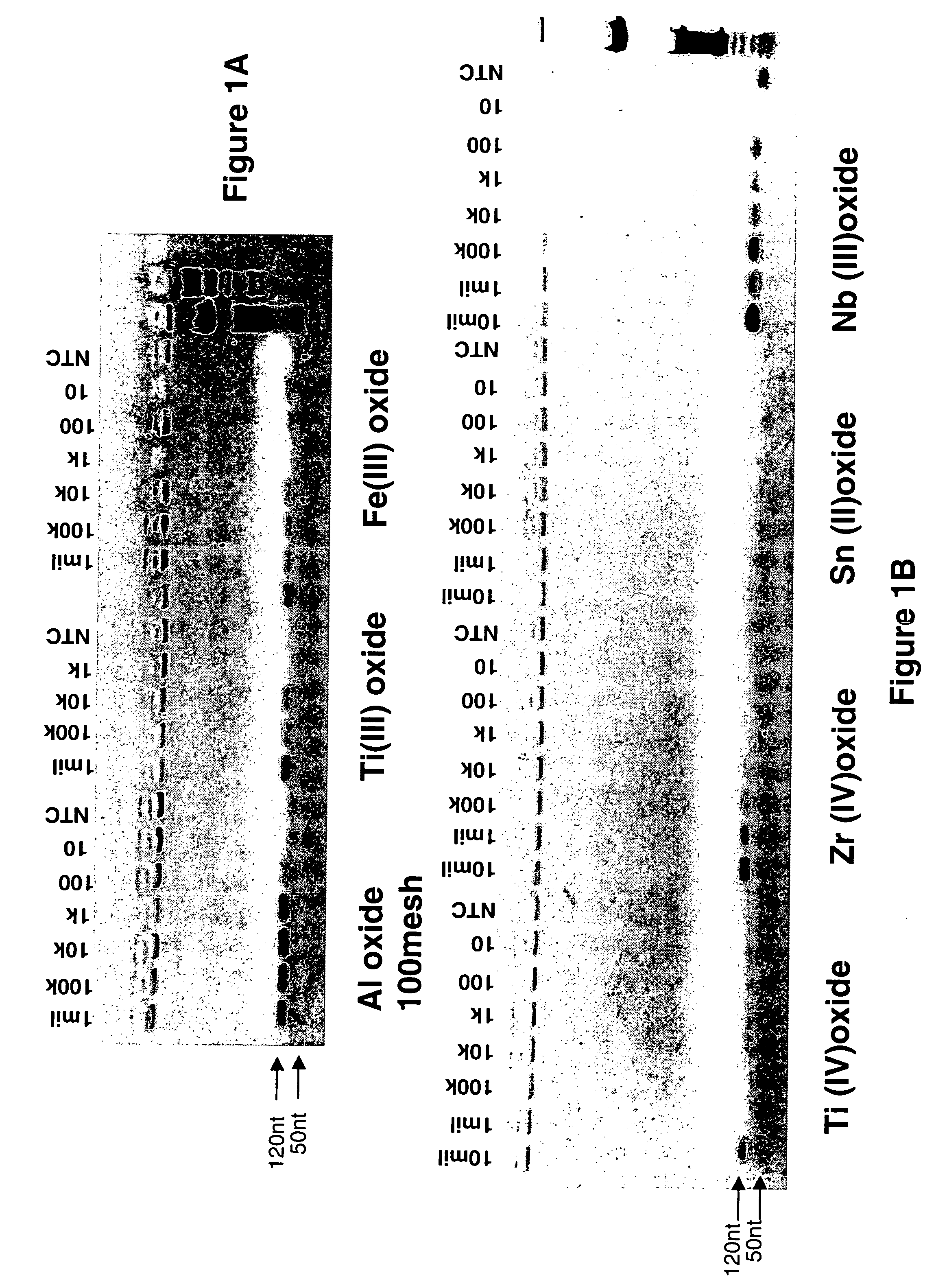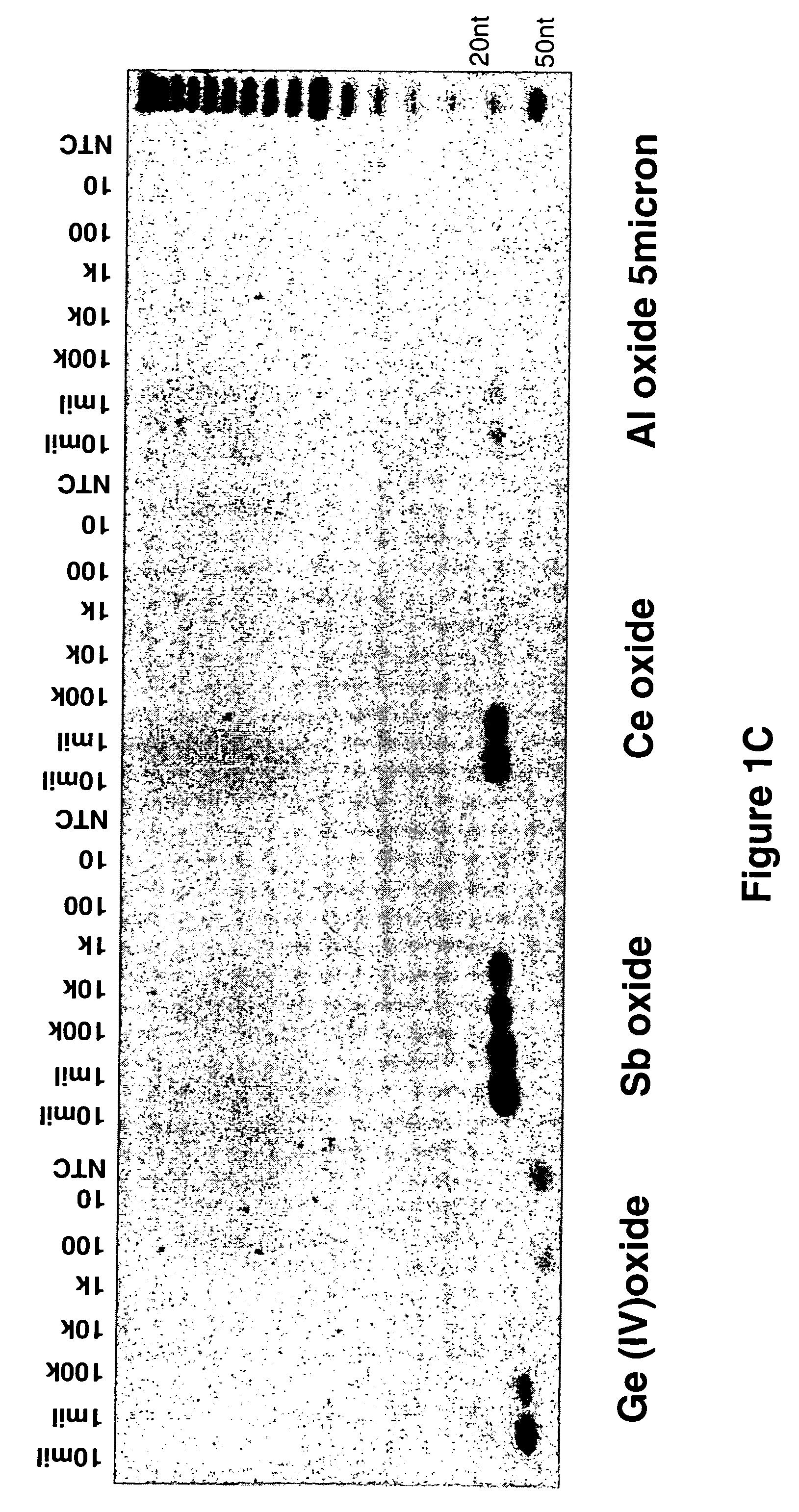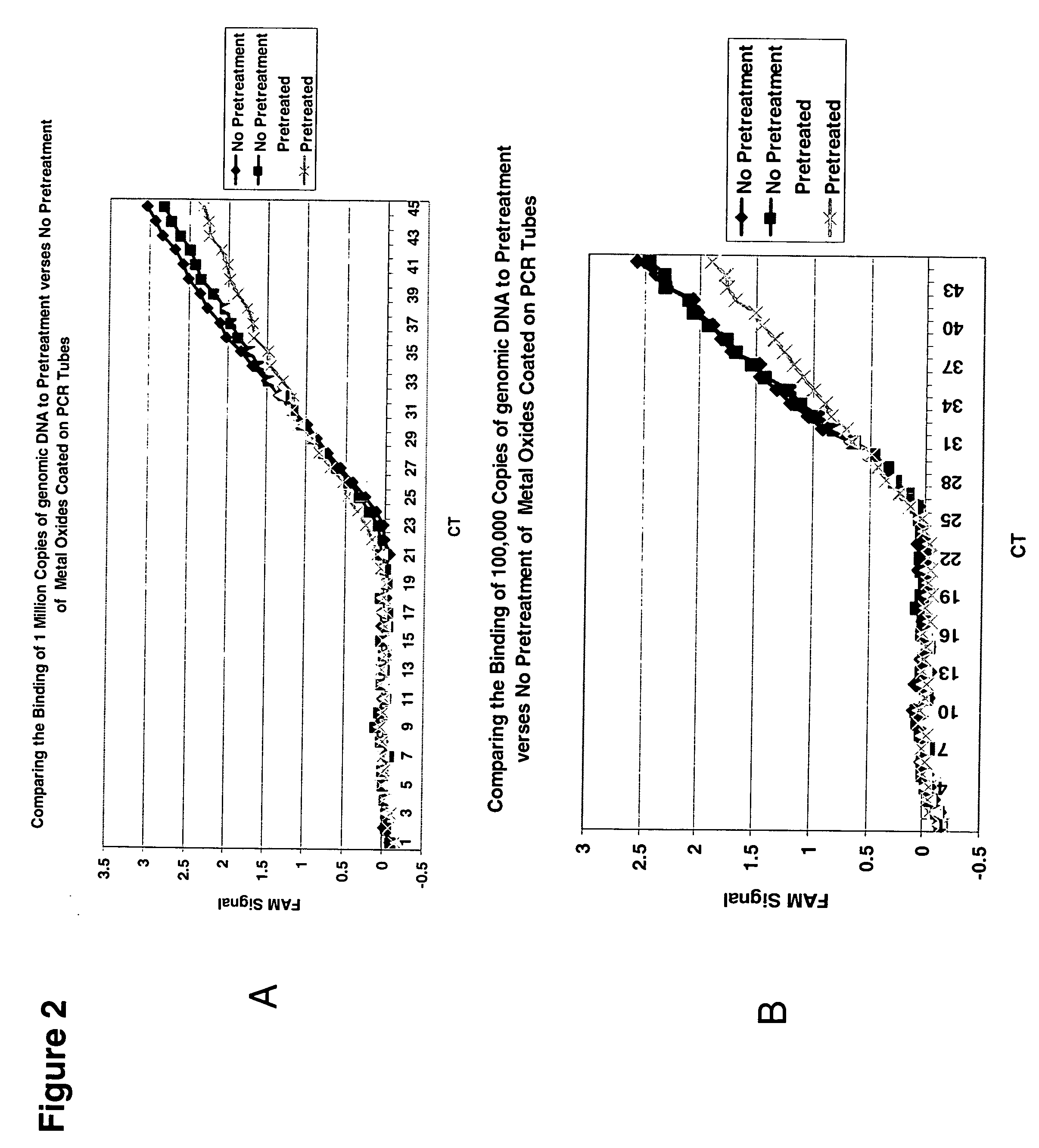Methods, compositions, and kits for detecting nucleic acids in a single vessel
a nucleic acid and single-vessel technology, applied in the field of purifying, concentrating, and detecting nucleic acids, can solve the problems of wasting time, bursting, and cells to lyse, and achieve the effect of reducing labor intensity and reducing labor intensity
- Summary
- Abstract
- Description
- Claims
- Application Information
AI Technical Summary
Problems solved by technology
Method used
Image
Examples
example 1
[0123] DNA binding to different metal oxides was measured by placing 15 mgs. of less than 100 micron metal oxide particles in the presence of 10 or 1 million copies of Listeria monocytogenes genomic DNA. The DNA was diluted in 100 μl of 0.5% Tween-20 solution to the specific concentration. This solution enhances binding of nucleic acids to the metal oxides. The DNA / metal oxide slurry was rotated at room temperature for 10 mins. The particles were spun down to pellet the metal oxides and 34 μls of the solution were added to a real-time PCR reaction to quantitate the concentration of DNA that remained in solution unbound to the particles. The sequence of the primers and probes used in this experiment are shown below:
(SEQ ID NO:1)Sequence 1: TCGTGCGCTTCTAGGT.(SEQ ID NO:2)Sequence 2: TGCTTTAGTTGCGATGGA.(SEQ ID NO:3)Probe Sequence: TATGAGTCGCCTTAGCTACAATGTATCT.(SEQ ID NO:4)Target Sequence: AATTACTAGATCAAACTGCTACAGGTGCTGCTACTCAAGTAAGCATCCAAGCGTCTGATAAAGCTAATG...
example 2
Amplification of DNA Bound to Metal Oxides
[0126] Amplification of the DNA bound to the metal oxide was examined using an ethidium bromide stained agarose gel. The DNA was bound to different metal oxides Aluminum (Sigma-Aldrich), Titanium (EM), Iron (SK Magnetics), Zirconium, Niobium, Germanium, Antimony, and Cerium (Alfa Aesar) in the presence of 40 mM NaOH and 0.5% Tween-20 solution. The alkaline solution was used to denature the DNA before binding to the metal oxides.
[0127] The DNA was titrated from 1 million copies / 100 μls to 10 copies / 100 μls in the presence of 15 mgs of particles. The DNA / metal oxide slurry was rotated at room temperature for 10 mins. The particles were spun down to pellet the metal oxides and the supernatant was discarded. The metal oxides were washed twice with a 0.5% Tween-20 solution and pelleted to discard the wash solution.
[0128] A 50 μl PCR reaction was add to the metal oxides bound with different concentrations of the genomic DNA. The reaction contai...
example 3
Real Time Detection of DNA Binding to Aluminum Oxide Coated PCR Tubes
[0130] 75-100 μls of a guanidine salt solution were incubated in a PCR tube coated with 15 mgs of 100-200 um aluminum oxide beads for 5 mins at room temperature to render the metal oxides hydrophilic. The genomic DNA was added after this treatment at different concentrations to determine the amount of DNA that is bound to the tubes. The sample was pipetted up and down 10 times and then discarded. The tube was washed and then PCR reagents were added on top of the solid matrix (FIG. 2).
[0131] Alternatively, genomic DNA was added straight to the tubes without rendering it hydrophilic. The sample was pipetted up and down 10 times and then discarded. The tube was washed two times with 200 μls of wash buffer (FIG. 2).
[0132] Each protocol was analyzed by a Taqman real-time PCR reaction containing 1.5 mM MgCl2, 200 μM dNTPs, 200 nM each primer pair, 200 nM Taqman™ probe, Rox reference dye and 2 units of AmpliGold™ Taq w...
PUM
| Property | Measurement | Unit |
|---|---|---|
| Fraction | aaaaa | aaaaa |
| Fraction | aaaaa | aaaaa |
| Fluorescence | aaaaa | aaaaa |
Abstract
Description
Claims
Application Information
 Login to View More
Login to View More - R&D
- Intellectual Property
- Life Sciences
- Materials
- Tech Scout
- Unparalleled Data Quality
- Higher Quality Content
- 60% Fewer Hallucinations
Browse by: Latest US Patents, China's latest patents, Technical Efficacy Thesaurus, Application Domain, Technology Topic, Popular Technical Reports.
© 2025 PatSnap. All rights reserved.Legal|Privacy policy|Modern Slavery Act Transparency Statement|Sitemap|About US| Contact US: help@patsnap.com



